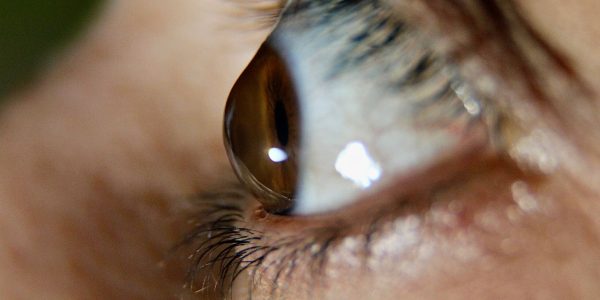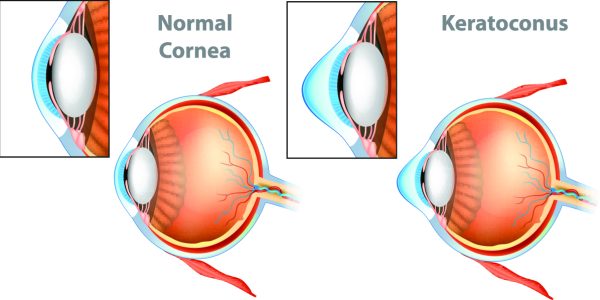
What is Keratoconus?
Keratoconus is a progressive eye condition in which the cornea thins. Over time, the cornea begins to bulge into a cone-like shape instead of maintaining its normal round shape. This cone shape deflects light as it enters the eye on its way to the light-sensitive retina, causing vision problems such as blurred vision, distorted vision, glare, increased sensitivity to light and mild eye irritation. People with keratoconus often have difficulty driving, using a computer and reading.
Keratoconus affects two out of every 1,000 individuals. In its early stages, the eye condition may be hard to detect, and if left untreated, it can eventually lead to permanent vision loss. Keratoconus can affect one or both eyes and often begins during a person’s teens or early 20s.
Risk Factors for Keratoconus
It is not entirely clear yet what causes keratoconus, but known risk factors for the eye condition include:
- Genetic predisposition
- Overexposure to UV rays
- Excessive eye rubbing
- Chronic eye irritation
- History of poorly fitted contact lenses
Treatment for Keratoconus
In the early stages of keratoconus, prescription glasses or contact lenses can help treat the condition. Often, as the condition progresses and the cornea continues to thin, glasses can no longer correct vision while contacts may become impossible to wear due to the bulging shape of the cornea.
For advanced stages of keratoconus, Dr. Mandel may recommend vision correction surgery with Intacs. Intacs are tiny plastic inserts placed in the mid-periphery of the cornea. The plastic segments helps reshape the cornea, which helps the contact lens to fit better.
Dr. Mandel offers vision correction surgery with Intacs for patients with keratoconus. In fact, he was the first surgeon in Northern California to perform Intacs surgery. Sometimes, if Intacs and contact lenses cannot correct the vision, a corneal transplant may restore vision.
Contact Us Today
To learn more about keratoconus or to find out if you are a suitable candidate for vision correction surgery using Intacs or a corneal transplant, schedule a one-on-one appointment with us. Please contact Optima Eye by emailing us at mmandel@optimaeye.com.


